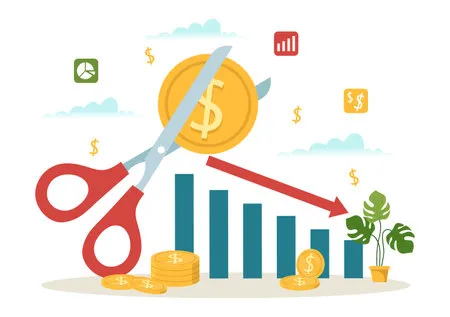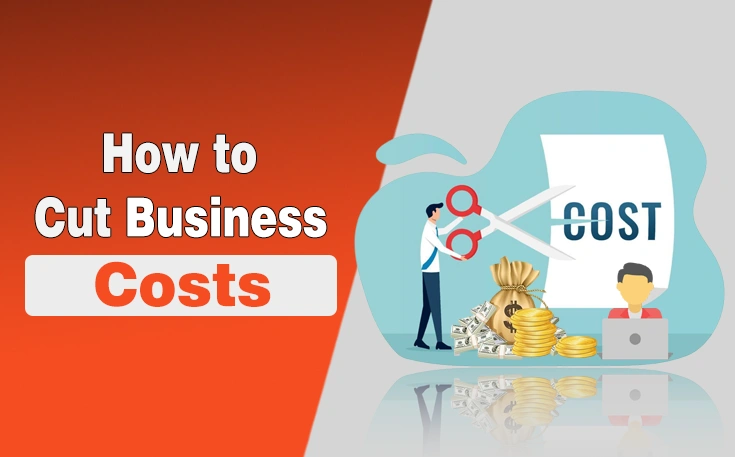Running a business isn’t cheap. Between software subscriptions, office space, marketing, and payroll, the expenses can pile up fast. But let’s be honest: when you cut business costs, it feels risky. What if trimming the budget means sacrificing quality? What if you lose customers because of cost-cutting decisions?
The good news: you don’t have to choose between saving money and keeping your business top-notch. The key is to cut smarter, not just cut more.
If you’re looking to trim unnecessary expenses without hurting your business, you’re in the right place.
In this blog post, I have listed the 8 smart money moves that will help you save cash while keeping operations running smoothly.
Are You Spending Smart or Just Spending?
Before we start the cost-cutting strategies, let’s take a step back. Are you tracking every dollar your business spends? Do you know which expenses are truly necessary and which are just… habits?
Many businesses waste thousands each year on outdated tools, bloated software subscriptions, and unnecessary services. The key isn’t just spending less, it’s spending more effectively.
8 Ways to Cut Business Costs
Now, let’s break down eight ways you can cut business costs without compromising quality.

1. Audit Your Expenses & Identify Waste
First things first: you can’t cut costs if you don’t know where your money is going.
A lot of businesses run on autopilot when it comes to expenses. Maybe you signed up for a subscription a year ago, and you’re still paying for it, despite barely using it. Maybe you’re spending way more than necessary on office supplies or third-party services.
Here’s what to do:
- Go through your last three months of business expenses. Look for anything that isn’t actively helping you grow or run your business efficiently.
- Cancel or downgrade unnecessary subscriptions. If you haven’t used a tool in months, why are you still paying for it?
- Negotiate with vendors. Sometimes, simply asking for a better rate can lower costs. More on that in a bit.
The goal? Eliminate the waste and redirect your budget toward things that truly matter.
2. Optimize Your Software & Subscriptions
Ever feel like your monthly software payments are soaring? You’re not alone. Many businesses subscribe to tools they barely use or pay for expensive software when a more affordable alternative would do the job just as well.
For example, if you’re using an overpriced accounting platform, you might consider a QuickBooks alternative for small businesses that offers the features you need without the hefty price tag. The same goes for project management tools, email marketing software, and CRMs.
How to Save Money on Software:
- Evaluate what you actually use. If a tool doesn’t provide measurable value, cut it.
- Look for all-in-one solutions. Some tools combine features, eliminating the need for multiple subscriptions.
- Consider free or lower-cost alternatives. Many business software options offer free plans or more budget-friendly pricing without sacrificing quality.
3. Negotiate with Vendors & Suppliers
Did you know that many businesses overpay for supplies and services simply because they never negotiate?
Vendors and suppliers often have flexible pricing, but if you don’t ask for a discount or better terms, they won’t offer it. Whether it’s raw materials, software, or business services, negotiation is key. It helps you greatly to cut business costs.
How to Negotiate Like a Pro:
- Do your research. Check competitor pricing and use that as leverage.
- Ask about bulk discounts. Buying in larger quantities often leads to better rates.
- Be willing to walk away. Sometimes, just the threat of switching to a competitor can get you a better deal.
A quick phone call or email could save you hundreds, or even thousands, of dollars per year.
4. Reduce Overhead Costs Without Losing Productivity
Rent, utilities, and office supplies can eat up a massive chunk of your budget. But with today’s work environment, do you really need that expensive office space?
Many businesses are transitioning to remote or hybrid models, saving money on rent, utilities, and office maintenance. If a fully remote setup isn’t an option, consider downsizing to a smaller office or coworking space.
Other Overhead-Cutting Strategies:
- Switch to energy-efficient lighting and office equipment. Small changes can add up.
- Use virtual assistants instead of full-time hires for tasks like customer service and administrative work.
- Opt for second-hand office furniture and equipment. No need to pay premium prices for brand-new items.
The bottom line? Keep what’s essential, and cut what’s not.
5. Automate & Streamline Operations
Automation isn’t just for big corporations; it’s a game-changer for small businesses, too.
The more time you spend on manual, repetitive tasks, the less time you have to focus on growth. Instead of hiring more employees or working extra hours, use automation to cut labor costs without losing efficiency.
What Can You Automate?
- Invoicing & Billing: Use automated invoicing tools to save time and reduce errors.
- Email & Marketing Campaigns: Schedule emails, social media posts, and ads in advance.
- Customer Support: Chatbots and automated responses can handle FAQs without hiring extra staff.
By letting software do the heavy lifting, you can focus on what really matters: growing your business.
6. Improve Cash Flow Management
Spending less is only one aspect of cost-cutting; another is improving cash flow management. Even if your business is profitable, poor cash flow can put you in a financial chokehold.
How to Improve Cash Flow:
- Invoice customers promptly and set up automatic reminders for late payments.
- Shorten payment terms with clients while negotiating longer terms with vendors.
- Make a cash flow projection so that you can plan for sluggish times.
When you manage cash flow wisely, you won’t have to panic every time an unexpected expense pops up.
7. Cut Marketing Costs Without Losing Visibility
Think you need a massive marketing budget to get noticed? Think again. Instead of throwing money at ads, focus on low-cost, high-impact marketing strategies.
How to Market on a Budget?
- Leverage social media & SEO: Free organic reach is still one of the best ways to attract customers.
- Use referral and loyalty programs: Your existing customers can bring in new ones without big ad spend.
- Repurpose content: Turn blog posts into social media snippets, emails, or even YouTube videos.
Smart marketing isn’t about spending more, it’s about spending strategically.
8. Invest in Cost-Efficient Growth Strategies
Not all expenses are bad. In fact, some costs actually save you money in the long run. For example:
- Training your team leads to fewer mistakes and better productivity.
- Investing in customer retention is often cheaper than constantly acquiring new customers.
- Data-driven decisions help you focus on what’s working and cut what’s not.
The trick? Spend money where it counts and eliminate the fluff.
Summing Up: Save Money Without Cutting Corners
When you cut business costs, it doesn’t mean slashing everything to the bone. It’s about making intentional decisions that keep your business strong while reducing waste.
So, what’s the first thing you’ll cut? Your bloated software expenses? That pricey office lease? Whatever it is, start today because small changes now can mean big savings down the road.





